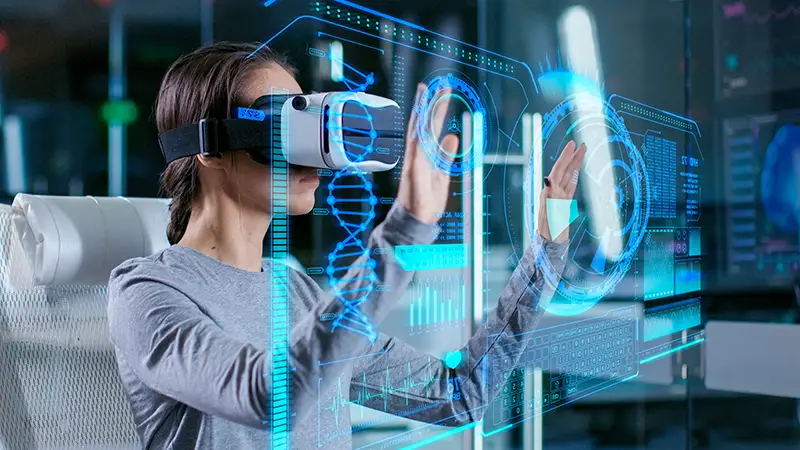Click here to get this post in PDF
Augmented reality is quickly being absorbed into video and the entertainment industry, but it has also been especially useful in other industries. When coupled with the richness of 3D environments and enhanced through the IoT, augmented reality offers increased efficiency, improved products, streamlined production, safer work environments, and happier employees and customers.
Aircada is an AR tool that will change industrial augmented reality, providing real time plant data where it’s needed, quickly and efficiently. So, at Aircada we expect AR to expand into many sectors of the manufacturing industry shortly.
Advantages of Augmented Reality in manufacturing
With technological advancement comes improved processes and work environments. Here are some of the direct benefits found in the application of AR to the manufacturing sector:
1. Production
Whether you are producing surgical lasers or children’s toys, every product being produced requires a specific set of instructions. Manufacturing requires the precision coordination of many different components being produced and assembled simultaneously.
For example, in the aerospace manufacturing processes, assembly assistance is provided on giant projectors that show each step in the process and part placement. This concept can be greatly improved with something smaller, more adaptable, and with a greater range of versatility.
2. Faster and smarter
By having digital information provided on hand for a real-world environment, engineers will have a better capacity to get their work done. For example, for assembly, engineers will not need to rely on schematics and can receive their instructions directly through the AR.
3. Expert Support
AR solutions that incorporate Vuforia Chalk are more powerful and intuitive and feature a remote guidance system to keep your team in detailed control. This will allow for the experts and technicians alike to mark-up live viewing of their project and provide step-by-step instructions to achieve a more excellent product and better-informed technician. In the long term, this will allow you to complete your product orders quickly and greatly reduce machine service turnaround.
4. Augmented Reality Employee Training
AR can be used much in the same way as VR, only far better. AR will allow employees to learn and understand intricate concepts with very detailed instructions and illustrations. With no performance anxiety, on-the-job training can become a fluid and effective process.
5. Product assembly
The assembly process for anything from electronic devices to nuclear warheads includes many different parts that must be connected properly and in the least time possible. Typically, the information on how this can be accomplished is found in a technical document containing many thousands of pages of monotonous techno-lingo. The very format of this information makes it very difficult to fully grasp the minutiae of do’s and don’ts that can apply to a single component of a very complex assembly.
Companies typically recruit a small army of technical writers to interpret and create these documents in an understandable text format. But the challenges of cultivating well-informed technicians can be met with the application AR for providing this important information. All the pertinent information for each step and component of the process can be provided in real-time through the AR headset. This will allow the process to be completed quickly and effectively.
6. Augmented Reality Machine Maintenance
Manufacturing companies can also apply AR technology in repairing and servicing the equipment required for their manufacturing process. Instead of having to dig up a ponderous owner’s manual and service instructions, your machinist will be able to use their AR modules to learn all they need to know about the machine or equipment they will be maintaining. With visual aids and clear instructions at every step of the way, maintenance and repairs can be carried out quickly and easily.
7. Support
The current method of providing support requires a human to provide on-site assistance, and this can be hard to coordinate and inefficient. The AR system will allow a clear connection between experts and technicians who share visual and audio feeds. This will allow them to examine the problem from the same perspective and provide precise solutions that prevent these issues from occurring in the future.
You may also like: 5 Ways Industrial AI Is Revolutionizing Manufacturing
Image source: Shutterstock.com

